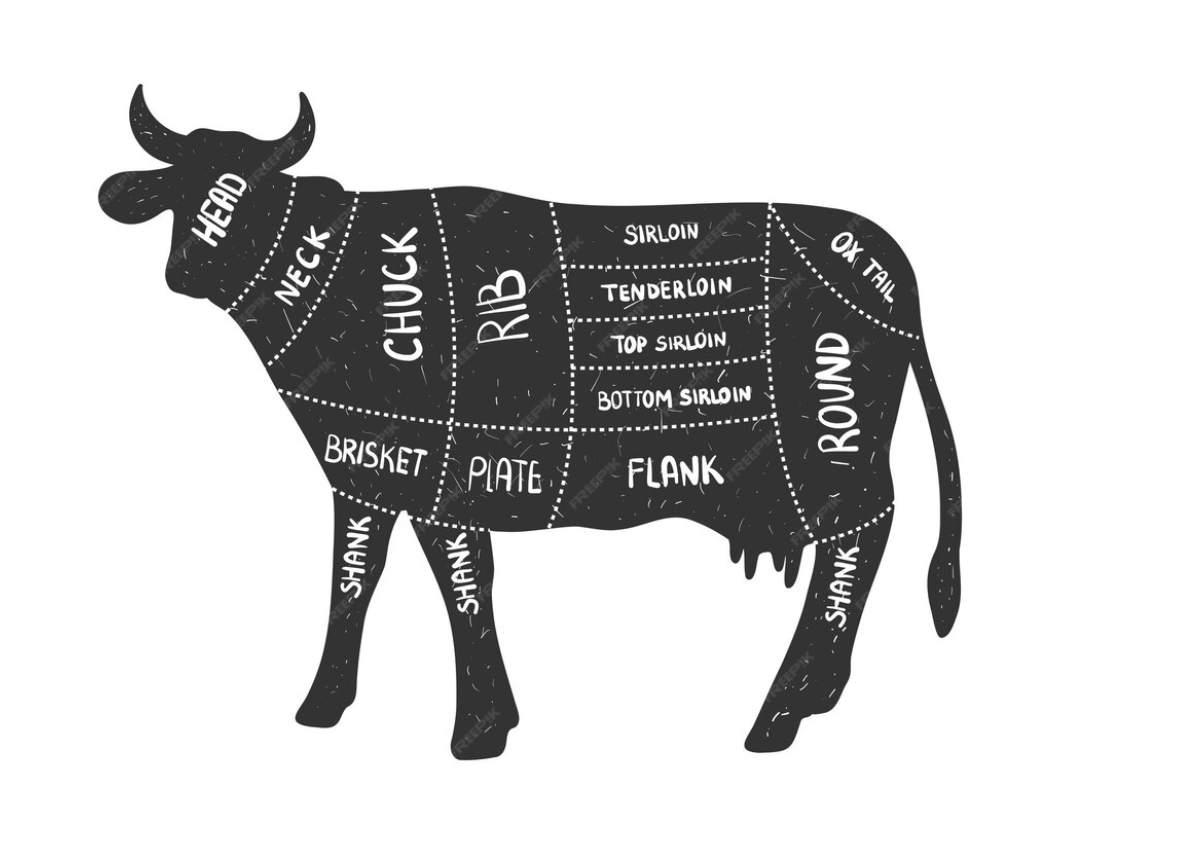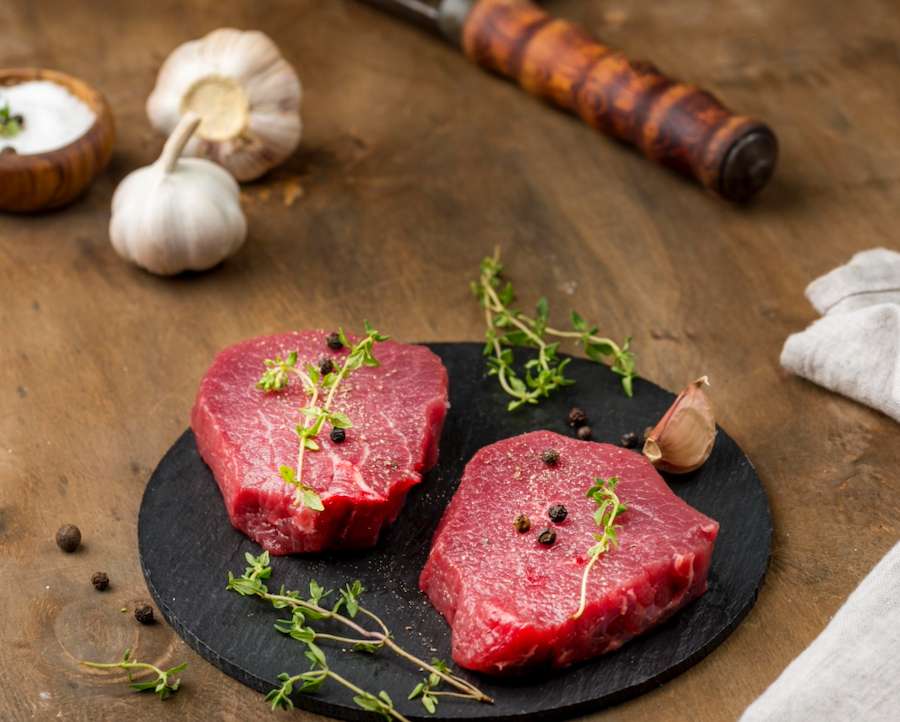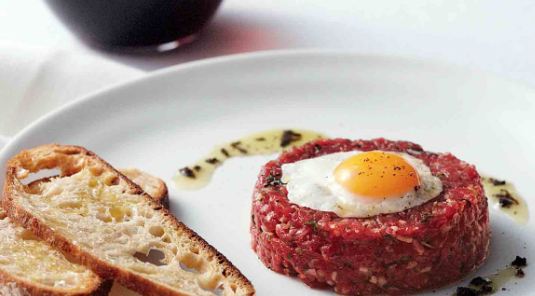Beef Fillet Recipes
This high-end cut of meat is sought after for its remarkable tenderness and exquisite flavour. Revered by chefs and home cooks alike, the beef fillet, also known as beef tenderloin, is the epitome of fine dining, offering a melt-in-your-mouth experience that is hard to rival.
Come with us as we explore the delights of this amazing cut of beef, and share insights on how to select, prepare and cook this esteemed cut to perfection. Whether you are a keen chef or a curious food enthusiast, understanding these fundamentals will help you impress your dinner guests.
What is Beef Fillet?
Beef fillet, also known as beef tenderloin or fillet steak, is one of the most sought-after cuts of beef, prized for its tenderness and subtle flavour. Located along the spine of the cow, nestled beneath the ribs and next to the backbone, this muscle does very little work, which accounts for its tenderness. Unlike other cuts, the beef fillet is lean, containing less fat, which contributes to its delicate texture and taste.
Characteristics of Fillet of Beef
The characteristics of beef fillet include its soft, buttery texture, making it a favourite for dishes that require minimal cooking to showcase its natural flavours. Its shape is elongated and tapered, allowing chefs to prepare it in various sizes, from thick, hearty fillet steaks to smaller filet mignon medallions.
Selecting the Best Beef Fillet
When it comes to choosing a beef fillet, a few key factors can significantly influence the quality and flavour of your dish. Here are some tips on what to look for:
- Marbling: While beef fillet is naturally leaner than other cuts, look for slight marbling – these thin streaks of fat enhance flavour and juiciness without compromising the meat's tender texture.
- Colour: A fresh beef fillet should have a vibrant, deep red colour. This indicates that the meat is fresh and has been properly handled and stored. Avoid cuts that appear dull or have a brownish tint, as this could indicate ageing or poor quality.
- Freshness: Always check the sell-by date and ensure the meat smells fresh. Avoid any fillet that has an off or sour odour, which is a clear indicator of spoilage.
- Consistency: The fillet should feel firm and cold to the touch. If the meat feels sticky or slimy, it's best to avoid it as these textures can signal that the meat is not fresh.
- Sourcing: Whenever possible, opt for beef that has been sustainably raised or comes from a reputable source, such as Scotch Beef. This grass-fed and organic option offers superior taste and quality, contributing to a more ethical and environmentally friendly choice.

Why Quality Matters
Quality meat plays a crucial role in cooking. It influences everything from taste and texture to health and environmental impact. Here's why Scotch Beef is sought after by chefs and home cooks alike:
- Flavour and Texture: High-quality meat, such as Scotch Beef, is renowned for its superior flavour and texture. The meticulous standards for raising cattle in specific geographical regions contribute to the meat's distinct taste and tenderness. This is particularly important for a cut like beef fillet, where the natural flavours and softness of the meat are paramount.
- Animal Welfare: Quality meat comes from producers who adhere to higher animal welfare standards. Animals that are well-cared for and raised in stress-free environments tend to produce meat that is not only ethically preferable but also of higher quality. Scotch Beef benefits from Scotland's stringent animal welfare protocols, ensuring the cattle are raised in humane conditions.
- Environmental Impact: Sustainable farming practices are crucial for reducing the environmental impact of meat production. Quality meat producers employ practices that prioritise the health of the land, water and biodiversity. By choosing meat with a GI designation, consumers also support farming methods that are in harmony with nature.
- Health Benefits: Quality meat is healthier, containing fewer additives and potentially harmful substances. Grass-fed beef, like that found in Scotland, has a more favourable nutritional profile, including higher levels of omega-3 fatty acids and antioxidants.
- Supporting Local: By opting for meat with specific geographical indications, consumers support local farmers and communities, helping preserve traditional farming methods and regional culinary heritage. This also ensures a shorter farm-to-table journey, contributing to the freshness and quality of the meat.

Choosing quality meat like Scotch Beef with UK GI status not only guarantees an enhanced dining experience but also supports ethical, environmental, and health-related values, making it a conscientious choice for consumers.
Preparing Fillet of Beef
Proper preparation is crucial for maximising the flavour and tenderness of your beef fillet.
Here's how to get your meat ready for cooking:
- Cleaning: Start by rinsing the beef fillet under cold water. Pat it dry with paper towels, as starting with dry meat will help you achieve a better sear.
- Trimming Excess Fat: While a beef fillet is a lean cut of meat, there might be some silver skin on the surface. Carefully trim it off with a sharp knife. Removing these will ensure a more even cooking and a better texture in the finished dish.
- Room Temperature: Allow the beef tenderloin to sit out at room temperature for about 30 to 45 minutes before cooking. This step ensures that the meat cooks evenly, preventing the outside from overcooking while the inside reaches the perfect doneness.
Seasoning and Marinating:
Seasoning and marinating can greatly enhance the flavour of your meat, adding depth and complexity to its natural taste.
- Dry Rubs: Create a dry rub with a mix of your favourite herbs and spices. Common choices include salt, black pepper, garlic powder, thyme, and fresh rosemary. Rub the mixture all over the fillet, pressing gently to stick the spices to the meat. The rub will form a delicious crust when cooked.
- Marinades: For a tender and flavourful fillet, consider marinating the meat. Combine ingredients like olive oil, soy sauce, lemon juice, and herbs in a bowl. Place the fillet and the marinade in a resealable bag, ensuring the meat is well-coated. Marinate in the refrigerator for at least 2 hours, though overnight marination can infuse more flavour.

Remember, the beef fillet is a high-quality cut, so whether you choose a simple seasoning or a marinade, the goal is to enhance, not overpower the meat's natural taste.
How To Cook Beef Tenderloin
There are several ways to prepare this delectable cut of meat.
Pan-Searing Beef Fillet:
Pan-searing is a popular method for cooking beef fillet, as it creates a flavourful crust while keeping this tender cut juicy.
- Heating the Pan: Place a large frying pan, preferably a heavy cast iron, over medium heat and let it get hot. Add a thin layer of high-smoke-point oil, like canola or grapeseed.
- Searing the Meat: Place in the seasoned beef fillet once the frying pan is hot. Don't overcrowd the pan to ensure each piece gets a nice crust. Cook without moving on one side for about 3-4 minutes until it develops a deep, golden-brown crust.
- Flipping the Fillet: Carefully flip the fillet to sear the other side, cooking for an additional 3-4 minutes. For thicker cuts, you may need to sear the edges as well.
- Testing for Doneness: Use a meat thermometer to check for your desired level of doneness (135°F for medium-rare, 145°F for medium, etc.). Remember, the meat will continue to cook a bit after removing it from the heat.
- Resting the Meat: Once cooked to your liking, transfer the fillet to a cutting board or plate and let it rest for about 5-10 minutes. This allows the juices to be redistributed, ensuring a moist and tender bite.
Oven-Roasting Beef Fillet:
Oven-roasting is an excellent method for cooking beef fillet evenly, especially for larger cuts.
- Preheating the Oven: Preheat your oven to 425°F (220°C). This high temperature is ideal for creating a delicious crust on the outside while keeping the inside tender.
- Preparing the Fillet: Season the fillet as desired. For added flavour, you can first sear it on all sides in a hot skillet for a couple of minutes per side.
- Roasting: Place the fillet in a roasting pan or on a rack. Insert a meat thermometer into the thickest part of the meat. Roast until it reaches your desired level of doneness (125°F for rare, 135°F for medium-rare, 145°F for medium).
- Resting: Let the beef fillet rest for 10-15 minutes after removing it from the oven. This resting period allows the juices to redistribute throughout the meat, ensuring a moist and flavourful result.
Eating Beef Fillet Raw:
Good quality grass-fed beef can be eaten raw in a classic Beef Tartare dish that showcases the beef fillet's delicate texture when consumed this way.
- Select Quality Meat: Use only the freshest, highest-quality beef fillet for this dish, specifically from a source that guarantees safe raw consumption, such as Scotch Beef.
- Prepare the Meat: Clean and finely chop the beef fillet. Ensure all equipment is clean to prevent contamination.
- Season: Combine the chopped beef with a light, citrusy dressing. Ingredients can include lemon or lime juice, olive oil, and mild herbs.
- Serve: Present the tartare immediately after preparation, garnished with fresh herbs and accompanied by toasted bread or crackers and a poached egg, fried egg or sous vide egg yolks.
Incorporating a citrusy coating not only adds a fresh flavour to the beef but also acts as a mild acid marinade, enhancing the texture and taste of the raw fillet and cooking it lightly. Always consume raw beef with caution, ensuring it's sourced and prepared with food safety in mind.

Regardless of the cooking method, achieving the perfect beef fillet requires attention to temperature and timing. Always use a meat thermometer and let the meat rest before serving to enhance its flavour and tenderness.
Classic Beef Fillet Mignon Recipe
The fillet mignon is a steak lover's dream, known for its tenderness and elegant simplicity.
- Ingredients:
- 2 beef fillet mignon steaks
- Salt and freshly ground black pepper
- 2 tbsp olive oil
- 2 tbsp butter
- 1 minced garlic clove
- Fresh thyme
- Preparation:
- Season the steaks generously with salt and pepper.
- Heat olive oil in a skillet over medium-high heat. Add the steaks and sear each side until golden brown, about 3-4 minutes per side for medium-rare.
- Add butter, garlic, and thyme to the skillet. As the butter melts, spoon it over the steaks to baste them, cooking for an additional 1-2 minutes.
- Rest the steaks for 5-10 minutes before serving to allow the juices to redistribute.
Inspirations for Beef Fillet Recipes
Here's a quick list of beef fillet recipes that range from classic preparations to more innovative culinary creations:
- Classic Beef Wellington: A luxurious dish where beef fillet is coated with mushroom duxelles and pâté or a pancake, then wrapped in puff pastry and baked to perfection. Serve it with a rich red wine sauce alongside mashed potatoes and seasonal greens.
- Pepper-Crusted Beef Fillet: Encrusted with cracked black peppercorns, this fillet is seared and served with a rich Cognac cream sauce.
- Beef Fillet with Béarnaise Sauce: A classic French preparation, serving the fillet with a tarragon-infused buttery sauce.
- Beef Fillet with Gorgonzola Sauce: The sharpness of Gorgonzola cheese creates a decadent sauce, complementing the mild flavour of the beef.
- Coffee-Rubbed Beef Fillet: An innovative approach using a dry rub made from finely ground coffee beans, which imparts a unique, rich flavour.
- Beef Fillet with Truffle Butter: Adding a slice of truffle butter to the hot fillet allows it to melt, infusing the meat with a luxurious truffle flavour for an ultimate showstopper meal.
- Asian-Inspired Sesame Beef Fillet: Marinated in soy sauce, sesame oil, and Asian spices, then seared and sprinkled with toasted sesame seeds.
- Beef Fillet Carpaccio: Thinly sliced raw beef fillet, typically served with olive oil, lemon juice, capers, rocket leaves, and Parmesan shavings.
- Beef Fillet with Balsamic Glaze: A reduction of balsamic vinegar creates a sweet and tangy glaze that's drizzled over the cooked fillet.
- Tuscan-Style Beef Fillet: Marinated with herbs, garlic, and olive oil, then grilled and served with a side of cannellini bean salad.
This list showcases the versatility of beef fillet, demonstrating how it can be the star ingredient in a wide array of dishes, from the traditional to the more contemporary and inventive. With such a star-quality ingredient and with a little cooking effort, you can achieve something truly spectacular.
Where Can I Buy Scotch Beef?
Did you know that you have quality ingredients right on your doorstep?
With the help of our user-friendly map, you can now easily find premium-quality Scotch Beef where you live. Simply enter your postcode, and the map will show you the nearest Scotch meat supplier.
You will be cooking up a storm in no time!
What's The Scotch Difference?
Let us take you on a journey into what makes Scotch Beef, Scotch Lamb and Specially Selected Pork so special, and how we produce such high-quality meat renowned and enjoyed worldwide.


- © MakeitScotch 2025
- Cookies
- Privacy
- Terms of Use
Site by Art Department
